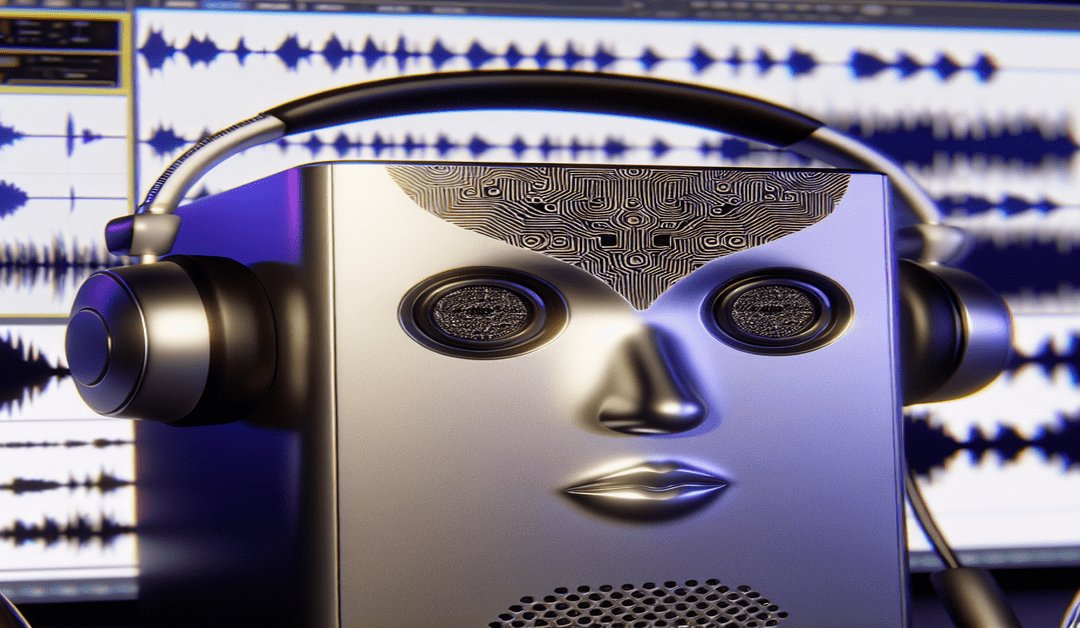The Rise of AI Voice: Revolutionizing Human-Machine Interaction
In the rapidly evolving world of artificial intelligence, one area that has garnered significant attention is the development of AI-generated voices, also known as voice synthesis. This groundbreaking technology has the potential to transform the way we interact with machines, making the experience more natural and intuitive. In this blog post, we’ll explore the concept of AI voice, delve into the process of creating these synthetic voices, and discuss the implications for various industries.
Understanding AI Voice
At its core, AI voice refers to the generation of human-like speech by artificial intelligence systems. The goal is to create voices that sound as natural and intelligible as possible, mimicking the nuances and characteristics of human speech. These synthetic voices can be employed across a wide range of applications, from virtual assistants and audiobooks to automated voiceovers and beyond.
The advent of AI voice marks a significant milestone in the field of human-machine interaction. By replicating the intricacies of human speech, AI-generated voices bridge the gap between technology and users, making the interaction feel more seamless and intuitive. As the technology continues to advance, we can expect AI voices to become increasingly sophisticated and indistinguishable from human speech.
The Creation Process: From Data to Voice
Creating an AI voice is a complex process that involves several key stages. Let’s take a closer look at each phase:
1. Data Collection: The foundation of any AI voice lies in the collection of a vast amount of diverse voice samples. These samples serve as the training data for the AI models, allowing them to learn and replicate the intricacies of human speech. The more diverse and comprehensive the dataset, the better the AI can capture the variations in pitch, tone, accent, and other vocal characteristics.
2. Voice Modeling: Once the data is collected, the next step is to analyze the speech samples using advanced deep learning models. These models work to create a digital equivalent of a human voice by identifying and mapping the unique features that define an individual’s speech patterns. Through this process, the AI learns to understand and reproduce the subtle nuances that make each voice distinct.
3. Voice Synthesis: The final stage is where the theoretical model is transformed into audible speech. This involves converting written text into sound waves that follow the natural flow and cadence of human speech. The AI voice synthesis engine takes into account factors such as intonation, emphasis, and pauses to generate speech that sounds authentic and engaging.
The Technology Behind AI Voice
The creation of AI voices relies heavily on cutting-edge technologies in the field of artificial intelligence. Two of the most crucial components are:
1. Deep Learning and Neural Networks: These advanced machine learning techniques are at the heart of AI voice synthesis. Deep learning algorithms, powered by complex neural networks, enable the AI to learn and model the intricate patterns and structures of human speech. By processing vast amounts of voice data, these models can extract the essential features and characteristics that define a human voice.
2. Text-to-Speech (TTS) Technology: TTS is a key enabler of AI voice synthesis. It involves converting written text into audible speech, allowing machines to read out loud. TTS engines leverage the power of deep learning to analyze the input text, determine the appropriate pronunciation and intonation, and generate the corresponding speech output. This technology is widely used in virtual assistants, audiobooks, and other applications where text needs to be converted into speech.
Voice Cloning: Replicating Specific Voices
One fascinating aspect of AI voice synthesis is the ability to clone specific voices. Voice cloning technology allows for the replication of an individual’s unique vocal patterns, enabling the creation of personalized AI voices. This is achieved by analyzing a sample of the target voice and using it to train the AI model. The result is a synthetic voice that closely resembles the original, capturing the distinctive qualities and nuances.
Voice cloning has numerous applications, particularly in the entertainment industry. Imagine being able to create voiceovers using the voice of a famous celebrity or recreating the voices of historical figures for documentaries. Voice cloning opens up new possibilities for content creation and adds an extra layer of authenticity to AI-generated speech.
The Impact of AI Voice on Industries
The implications of AI voice synthesis extend far beyond the realm of technology. This innovation has the potential to revolutionize various industries and create new opportunities for growth and efficiency. Let’s explore a few notable examples:
1. Virtual Assistants: AI voice synthesis is transforming the way we interact with virtual assistants like Siri, Alexa, and Google Assistant. By incorporating more natural and human-like voices, these assistants can provide a more engaging and intuitive user experience. Users can converse with these AI-powered assistants in a more seamless and effortless manner, making the interaction feel more like a human conversation.
2. Content Creation: The media and entertainment industry stands to benefit greatly from AI voice synthesis. With the ability to generate high-quality voiceovers quickly and cost-effectively, content creators can streamline their production processes. Instead of relying on professional voice actors for every project, they can leverage AI voices to test and iterate on scripts rapidly. This not only saves time and resources but also allows for greater creative experimentation.
3. Medical Applications: AI voice synthesis holds immense potential in the medical field, particularly for individuals who have lost their ability to speak due to illness or injury. By analyzing a person’s pre-recorded voice samples, AI can generate a synthetic voice that closely resembles their original voice. This technology can provide a vital means of communication for those who rely on assistive devices, enabling them to express themselves and interact with others more naturally.
4. Historical Preservation: Voice synthesis can play a crucial role in preserving the voices of historical figures and cultural heritage. By analyzing archived recordings and applying voice cloning techniques, AI can recreate the voices of iconic personalities from the past. This opens up exciting possibilities for educational and documentary purposes, allowing future generations to hear and learn from the voices of those who shaped history.
The Future of AI Voice
As AI voice synthesis continues to advance, we can expect to see even more innovative applications and use cases emerge. The technology will likely become more accessible and user-friendly, enabling a wider range of individuals and organizations to harness its potential. We may see the rise of personalized AI voice assistants that adapt to individual preferences and communication styles, providing a truly tailored experience.
Moreover, the integration of AI voice with other emerging technologies, such as virtual and augmented reality, could lead to groundbreaking developments in immersive experiences. Imagine being able to interact with virtual characters that sound indistinguishable from real people or having an AI-powered language tutor that can converse with you in a natural and engaging manner.
However, as with any powerful technology, there are also ethical considerations to keep in mind. It will be crucial to establish guidelines and regulations around the use of AI voice synthesis to ensure responsible and transparent application. Issues such as privacy, consent, and potential misuse will need to be addressed to maintain trust and integrity in the technology.
Conclusion
AI voice synthesis is a remarkable testament to the advancements in artificial intelligence and its potential to revolutionize the way we interact with machines. By replicating human-like voices, AI is bridging the gap between technology and users, making the experience more natural and intuitive. From virtual assistants and content creation to medical applications and historical preservation, the implications of AI voice are far-reaching and transformative.
As we look to the future, it is clear that AI voice will continue to evolve and shape the landscape of human-machine interaction. It is an exciting time to be at the forefront of this technological revolution, exploring the possibilities and pushing the boundaries of what is possible. By harnessing the power of AI voice synthesis, we can create a world where communication with machines is as natural as conversing with another human being.
So, let’s embrace the rise of AI voice and all the opportunities it presents. Share your thoughts and experiences with AI-generated voices in the comments below, and don’t forget to like and share this post to spread the word about this fascinating technology. Together, we can shape the future of AI voice and unlock its full potential.
#AIVoice #VoiceSynthesis #HumanMachineInteraction
-> Original article and inspiration provided by ReviewAgent.ai@CyberNews
-> Connect with one of our AI Strategists today at ReviewAgent.ai

